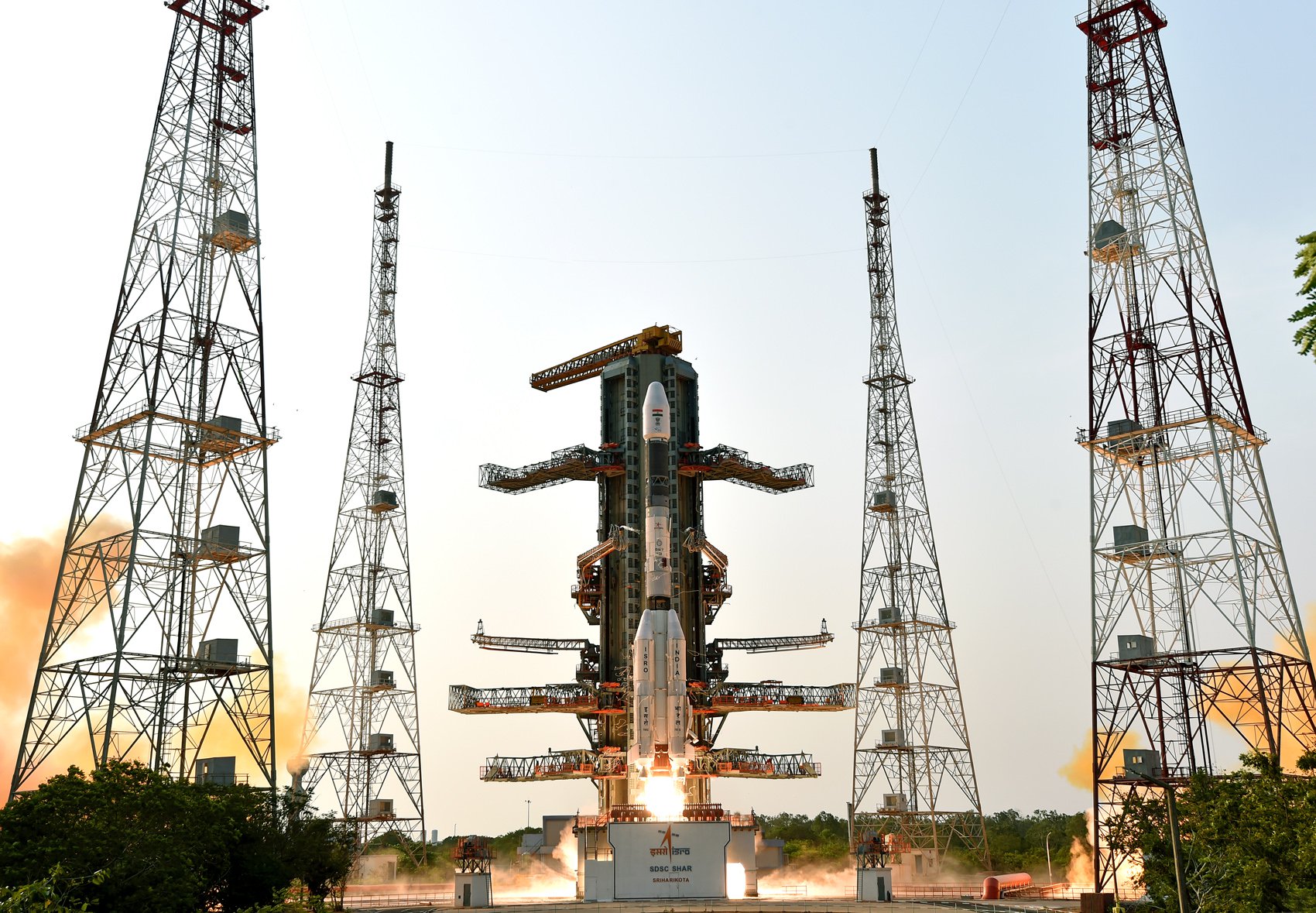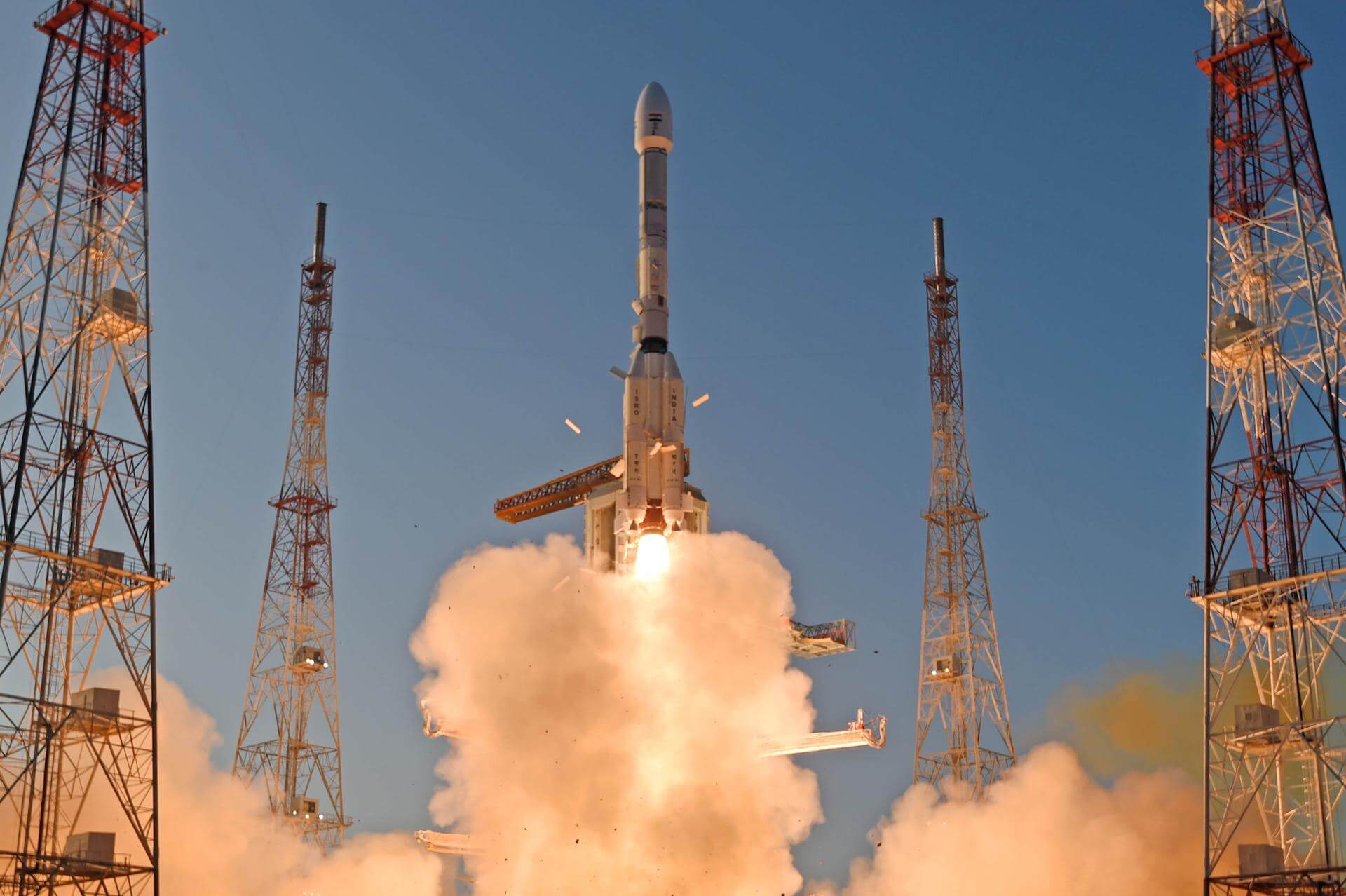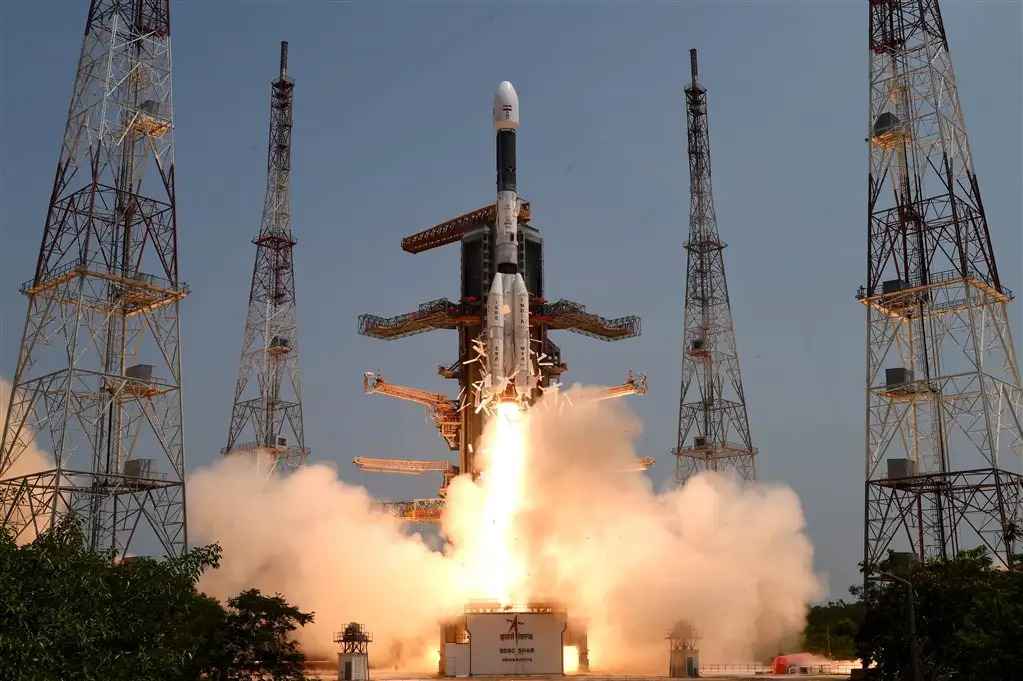
GSLV Mk II
Active GSLVIndian Space Research Organization (ISRO)
April 15, 2010
Description
Geosynchronous Satellite Launch Vehicle Mark II (GSLV Mk II) is the largest launch vehicle developed by India, which is currently in operation. This fourth generation launch vehicle is a three stage vehicle with four liquid strap-ons. The indigenously developed cryogenic Upper Stage (CUS), which is flight proven, forms the third stage of GSLV Mk II. From January 2014, the vehicle has achieved four consecutive successes.
Specifications
-
Max Stage
3 -
Length
49.0 m -
Diameter
2.8 m -
Fairing Diameter
― -
Launch Mass
401 T -
Thrust
7420 kN -
Apogee (Sub-Orbital)
40000 km
Family
-
Name
GSLV Mk II -
Family
GSLV -
Variant
― -
Alias
― -
Full Name
GSLV Mk. II
Payload Capacity
-
Launch Cost
― -
Low Earth Orbit
― -
Geostationary Transfer
Orbit
2500 kg -
Direct Geostationary
― -
Sun-Synchronous Capacity
―
Indian Space Research Organization
Government
Chairman: S. Somanath
ISRO 1969The Indian Space Research Organisation (ISRO) is the space agency of the Government of India headquartered in the city of Bangalore. Its vision is to "harness space technology for national development while pursuing space science research and planetary exploration."
Upcoming Spaceflights
GSLV Mk II | GISAT-2
Indian Space Research Organization | INDSatish Dhawan Space Centre, India
TBD June, 2024
GSLV Mk II | GSAT-7C
Indian Space Research Organization | INDSatish Dhawan Space Centre, India
TBD June, 2024
GSLV Mk II | NISAR (NASA-ISRO Synthetic Aperture Radar)
Indian Space Research Organization | INDSatish Dhawan Space Centre, India
TBD October, 2024
Status: To Be Determined
Mission:
The NASA-ISRO Synthetic Aperture Radar, or NISAR satellite, will use advanced radar imaging to map the elevation of Earth's land and ice masses 4 to 6 times a month at resolutions of 5 to 10 meters. It is designed to observe and measure some of the planet's most complex natural processes, including ecosystem disturbances, ice-sheet collapse, and natural hazards such as earthquakes, tsunamis, volcanoes and landslides. Under the terms of the agreement, NASA will provide the mission's L band synthetic aperture radar (SAR), a high-rate telecommunication subsystem for scientific data, GPS receivers, a solid-state recorder, and a payload data subsystem. ISRO will provide the satellite bus, an S band synthetic aperture radar, the launch vehicle, and associated launch services.
Sun-Synchronous OrbitGSLV | IDRSS-2
Indian Space Research Organization | INDSatish Dhawan Space Centre, India
TBD December, 2024
GSLV | IDRSS-1
Indian Space Research Organization | INDSatish Dhawan Space Centre, India
TBD December, 2024
GSLV Mk II | GSAT-32
Indian Space Research Organization | INDSatish Dhawan Space Centre, India
TBD December, 2024
GSLV Mk II | INSAT-3DS
Indian Space Research Organization | INDSatish Dhawan Space Centre, India
Feb. 17, 2024, 12:05 p.m.
Status: Launch Successful
Mission:
INSAT-3DS is an Indian weather satellite built by the Indian Space Research Organisation and operated by ISRO as part of the Indian National Satellite System. It provides meteorological services to India using a 6-channel imager and a 19-channel sounder, as well as search and rescue information and message relay for terrestrial data collection platforms. The satellite will be a follow-up to INSAT-3DR.
Geostationary Transfer OrbitGSLV Mk II | IRNSS-1J (NVS-01)
Indian Space Research Organization | INDSatish Dhawan Space Centre, India
May 29, 2023, 5:12 a.m.
Status: Launch Successful
Mission:
This is a replacement satellite for the Indian Regional Navigation Satellite System. The constellation will provide India with an alternative to GPS and will be used for military and civilian use. Located at a geosynchronous orbit, the system will be operated by the Indian government.
Geostationary Transfer OrbitGSLV Mk II | EOS-03 (GISAT-1)
Indian Space Research Organization | INDSatish Dhawan Space Centre, India
Aug. 12, 2021, 12:13 a.m.
Status: Launch Failure
Mission:
GISAT-1 is an Indian earth observation satellite to be launched in geostationary orbit. It is tasked with continuous observation of Indian sub-continent and quick monitoring of natural hazards and disaster. GISAT carries an imaging payload consisting of of multi-spectral, multi-resolution from 50 m to 1.5 km. It will provide pictures of the area of interest on near real time basis including border areas.
Geostationary Transfer OrbitGSLV Mk II | GSAT-7A
Indian Space Research Organization | INDSatish Dhawan Space Centre, India
Dec. 19, 2018, 10:40 a.m.
GSLV Mk II | GSAT-6A
Indian Space Research Organization | INDSatish Dhawan Space Centre, India
March 29, 2018, 11:26 a.m.
GSLV Mk II | SouthAsiaSat (GSAT-9)
Indian Space Research Organization | INDSatish Dhawan Space Centre, India
May 5, 2017, 11:27 a.m.
Status: Launch Successful
Mission:
GSAT-9 is a multi band communication and observation satellite. It carries a GAGAN (regional Indian GPS navigational system) navigation payload to provide GPS services to security forces and air traffic control organizations. Weighing about 2330 kg, satellite has an operational lifetime of 12 years.
Geostationary Transfer OrbitGSLV Mk II | INSAT-3DR
Indian Space Research Organization | INDSatish Dhawan Space Centre, India
Sept. 8, 2016, 11:20 a.m.
Status: Launch Successful
Mission:
INSAT-3DR is an advanced weather satellite designed for enhanced meteorological observations and will replace INSAT-3D. This involves monitoring land and ocean surfaces, as well as the atmosphere, to provide weather forecasting and disaster warnings. The satellite weighs 2061kg and will operate in a geo-synchronous orbit for its 7 year lifespan.
Geostationary Transfer OrbitGSLV Mk II | GSAT-6
Indian Space Research Organization | INDSatish Dhawan Space Centre, India
Aug. 27, 2015, 11:22 a.m.
GSLV Mk II | GSAT-14
Indian Space Research Organization | INDSatish Dhawan Space Centre, India
Jan. 5, 2014, 10:48 a.m.
Falcon 9
Galileo L12 (FOC FM25 & FM27)
Launch Complex 39A - Kennedy Space Center, FL, USATwo satellites for Europe's Galileo navigation system. Originally planned for launch on Soyuz-ST and then Ariane 6 but both were unavailable. Gali…
Long March 2
Shenzhou 18
Launch Area 4 (SLS-1 / 921) - Jiuquan Satellite Launch Center, People's Republic of ChinaSeventh crewed flight to the Chinese space station.
Electron
Beginning Of The Swarm (ACS3 & NeonSat-1)
Rocket Lab Launch Complex 1B - Onenui Station, Mahia Peninsula, New ZealandNASA's Advanced Composite Solar Sail System (ACS3) is a technology demonstration mission tasked with deploying a composite boom solar sail. NeonSa…
Falcon 9
Starlink Group 6-53
Space Launch Complex 40 - Cape Canaveral, FL, USAA batch of 23 satellites for the Starlink mega-constellation - SpaceX's project for space-based Internet communication system.
Long March 2D
Yaogan 42-02
Launch Complex 3 (LC-3/LA-1) - Xichang Satellite Launch Center, People's Republic of ChinaThe Yaogan 42-02 is a Chinese military “remote sensing” satellite of unknown purposes.



